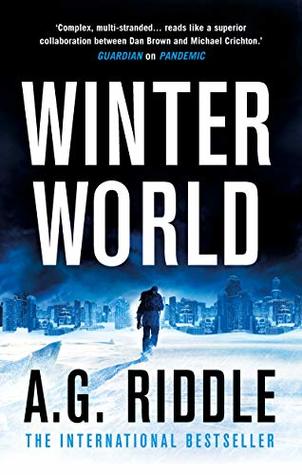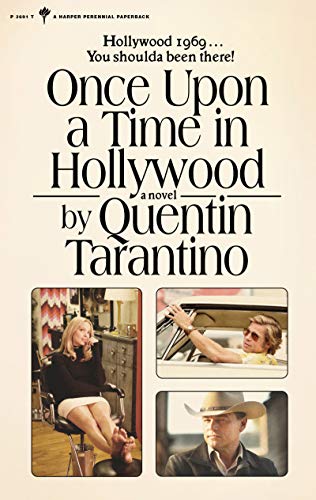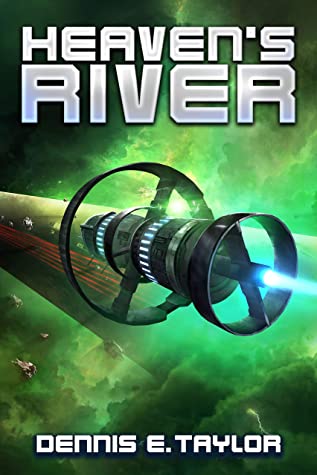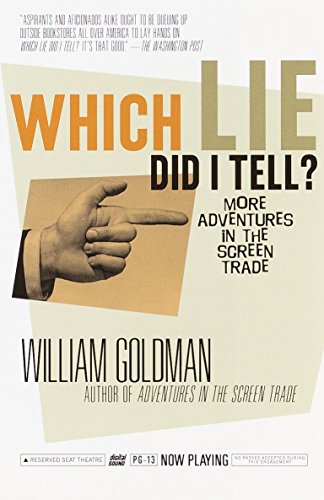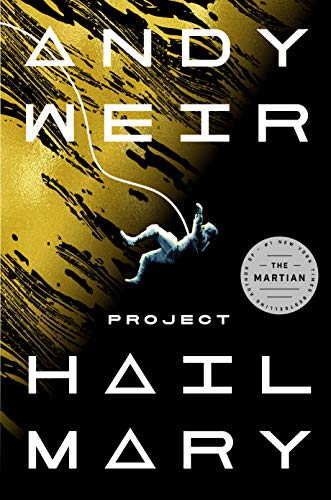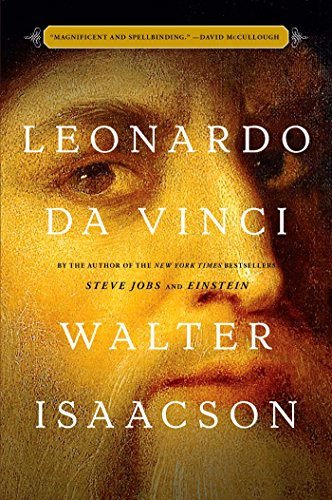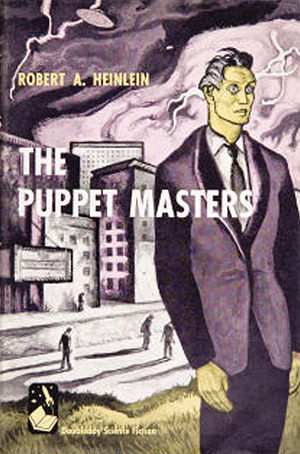SF Book Review – Part 38: The Long Winter and Moar
I’m still catching up with recent SF reading and I figure it’s best to get this out before the Six Weeks of Halloween revs up. This post covers stuff I read from June right up until last week, so we’re pretty much caught up. Naturally, we’ll cover some horror books during the 6WH, so it may be a while before returning to SF proper. Anywho, let’s get to it:
First up is the Long Winter Trilogy:
Winter World, by A.G. Riddle – A new, inexplicable ice age has descended upon earth. Desperate for answers, scientists send probes out into the solar system and discover mysterious objects disrupting solar energy. James Sinclair is a disgraced roboticist serving time in prison, but is nonetheless tapped to be on the team that will confront the forces disrupting earth. Will this team be able to figure out what’s happening and find a countermeasure? A sorta light space opera/first contact tale in the vein of Blake Crouch or Peter Clines (to name two folks I’ve read recently that operate in a similar way).
Old SF hands might not find a ton of new ideas here, but it’s well executed and entertaining. Some of the twists and turns are foreshadowed hard, so hard that maybe they’re not supposed to be twists? I mean, some things that are blindingly obvious to readers somehow surprise some characters in strange ways. As an opening shot in a trilogy, it’s just fine. Won’t blow your mind, but it’s a well told story and it’s achieving what it sets out to do…
I’ve avoided spoilers thus far, but talking about the next two books will necessarily mean a little bit of spoilers (overall, an entertaining light SF trilogy that manages to hint at some actually fascinating stuff towards the end). Alright, Spoilers aho:
The Solar War, by A.G. Riddle – This picks up where the first book led off, with earth and humanity enjoying a brief respite from the winter. They’re using this time to prepare for the return of the Grid, who will no doubt be focusing more energy on getting rid of humanity this time around. That’s not just meant as a metaphorical turn of phrase: the Grid is almost entirely motivated by the collection and conservation of energy. Their original plan was to harvest our Sun’s energy in such a way that humanity would be quickly destroyed in the process. In the first book, humanity managed a small victory, but now the Grid has returned. They’ve flung asteroids at earth, but will humanity’s defenses hold up? Eh, sorta.
Like a lot of middle stories in a trilogy, there’s a lot of water treading here, and setup for the next book. I’m of two minds as to how this all goes down. On the one hand, humanity did seem awfully outmatched and only managed success in the first book because the invaders weren’t really trying that hard. On the other, it’s not especially entertaining seeing the humans get nearly obliterated, and Riddle spends an awful lot of time on the nuts and bolts survival aspects of the story. All well and good, but the overarching narrative isn’t advanced much. Also, the deal that the Grid offers doesn’t make a ton of sense, even if the humans in the story are appropriately suspicious. In any case, the tone and pacing are pretty much par for the course here, and this is a similar experience to the first book. Nothing really new here, but well executed and entertaining enough that I wanted to see what would happen next.
The Lost Colony, by A.G. Riddle – The remnants of humanity now number in the thousands, and have settled on an eyeball planet around a low power star that the Grid doesn’t find interesting enough to harvest. This plays out like two novellas smushed into a novel. The first story is all about survival in the new wilderness, which contains deadly predators (along the lines of a T-Rex), vicious storms caused by celestial mechanics, and smaller scorpion-like threats. Like in the second book, this feels a lot like water-treading… but the second phase of this novel recontextualizes in an interesting way.
In fact, the entire series thus far is recontextualized. Riddle really swings for the fences in the second act of this book, devising an origin for the Grid that is novel and fascinating. I’ve described the previous two books as a sorta light SF that you’ve seen before (if well executed), but this second half of the third book does offer something new. Does it entirely work? Did we really need to march through two and a half books to get here? Do the physics actually work out? Does the Grid’s plan hinge on too much chance? Are the ethical implications of what’s really going on justified? Maybe not? But I can appreciate the ambition and effort. Perhaps it’s just the notion of being lulled into that feeling of a familiar, derivative story being shattered by something kinda out-there that did the trick, but I really enjoyed this aspect of the book. Overall, I enjoyed the series and I liked how bonkers the ending got, but I wish there was less water-treading throughout the series and more of that sense of wonder stuff interspersed throughout.
The Engines of God, by Jack McDevitt – Humans have expanded beyond their solar system and they’ve begun to find mysterious alien artifacts. They’ve dubbed the aliens Monument-Makers, but have been unable to discern anything about them. Each artifact is different and beautiful, but they defy explanation. Then a team of scientists discover an artifact that appears to have played a role in a lost civilization. Previously discovered artifacts can also be tied to lost civilizations, making them somewhat more ominous. Earth itself is facing ecological disaster – do the Monument-Makers have something in mind for us?
It’s an interesting spin on the big dumb object sub-genre. Instead of a giant unknowable artifact, we get lots of smaller ones. McDevitt does a good job setting all this up, perhaps somewhat less so of establishing characters and plot mechanics. Like the Long Winter books above, there’s a significant portion of this book that’s focused on episodic tales of survival or races against the clock. All well and good, but spending a bunch of time fending off throngs of crab-like monsters doesn’t really advance the narrative much. Progress is made in the end though, and the explanation makes sense. I’ll cut this a little more slack because it’s all completed in a single novel, though there are apparently additional stories set in this universe. I will probably make my way to those sequels at some point, which says something, I think. Not exactly top tier stuff, but well executed and interesting enough.
Spin, by Robert Charles Wilson – One night when they were ten years old, Tyler Dupree and his neighbors Jason and Diane Lawton were playing in the yard when the stars went out. There was a brief, bright flash, then the sky just went black. Scientists eventually discover that earth has been placed within some sort of “spin membrane”. Outside the membrane time is moving at a hugely accelerated pace – about 3 years outside per second inside, or 100 million years on the outside per year inside. How will this development affect humanity? How will we respond? What about the Hypotheticals – the aliens who put the membrane in place? What’s their endgame?
It’s a great setup, and to be sure, Wilson puts the premise to good use and develops some great, extra-crunchy SF ideas throughout. For example, the time passing outside the spin membrane is terrifying, but it also opens up some avenues that wouldn’t otherwise be available. Because time is moving so fast, the notion of terraforming Mars becomes much more feasible. That’s a neat extrapolation from the base idea, and there are others throughout the book. However, the bulk of the story is comprised of character-based drama surrounding the three kids as they group up during the spin. Jason becomes a scientist working to understand the spin and develop various strategies to work around it, but he’s also struggling under the grip of an overbearing father not to mention his own medical problems. Diane retreats from society, basically joining a cult. Tyler just sorta meanders about, eventually coming to work for Jason but still struggling to find a way to reach Diane (who he’s clearly in love with). They’re all well drawn and fleshed out, even if I sometimes had a difficult time connecting.
This is a book for those folks who like to define SF as “all about the human condition” or some such. Those of us who are in it more for the sense of wonder and idea content will have plenty to chew on, but the proportion is far more focused on character than it is on ideas. So I’m a bit torn here. I really love the SF ideas , but I didn’t quite connect with the characters enough to love all the time spent on their foibles. Your mileage may vary…
Murder by Other Means, by John Scalzi – The second novella in this series about “dispatchers”, people who are legally empowered to take a life (except in this world, anyone who is murdered survives – they just wake up in their home after being murdered. Natural deaths still occur, only murders are affected). It’s a silly premise, to be sure, but both novellas are fun mystery thriller type stories suffused with Scalzi’s usual tight plotting, snappy dialog, and light humor. For whatever reason, these were conceived as Audible originals and initially released only on audiobook. It’s read by Zachary Quinto, who does an admirable job. This particular installment involves shady business deals, a dispatching gone wrong, and a frame job on our hero. All quite entertaining and fun. I know Scalzi can rub some folks the wrong way outside of his books, but the stories themselves are almost always fun and worth checking out.
And we’re all caught up. Stay tuned for Week 1 of the Six Weeks of Halloween!
